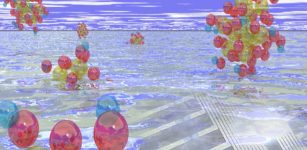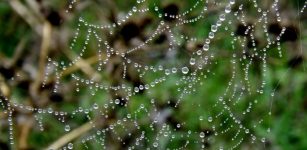Avatar-Like Bright Glowing Plants That Produce Billion Photons Per Minute – Created
Cynthia McKanzie – MessageToEagle.com – In the science fiction movie Avatar we see marvelous glowing plants and jungles. These sci-fi plants are amazingly beautiful. Not only do they glow but they also shoot poison leaf tips and communicate. Bioluminescence is the way that living organisms emit light, but what’s the point of creating glowing plants?
The imaginary world of lush bioluminescent jungles in the Avatar movie can inspire future scientific projects.
![]()
Scientists have successfully created Avatar-like glowing plants. Credit: James Cameron’s Avatar: The Game
Scientists have just created plants that produce their own visible luminescence. In Nature Biotechnology, researchers reveal that bioluminescence found in some mushrooms is metabolically similar to the natural processes common among plants. By inserting DNA obtained from the mushroom, the scientists were able to create plants that glow much brighter than previously possible.
This biological light can be used by scientists for observing the inner workings of plants. In contrast to other commonly used forms of bioluminescence, such as from fireflies, unique chemical reagents are not necessary for sustaining mushroom bioluminescence. Plants containing the mushroom DNA glow continuously throughout their lifecycle, from seedling to maturity.
The new discovery can also be used for practical and aesthetic purposes, most notably for creating glowing flowers and other ornamental plants. And while replacing street lights with glowing trees may prove fantastical, the plants produce a pleasant green aura that emanates from their living energy.
According to the authors, the plants can produce over a billion photons per minute.
Little more than a year ago, scientists uncovered the parts that sustain bioluminescence in mushrooms. For the first time, the living light of an advanced multicellular organism was fully defined. In the present report, the authors disclose that mushroom bioluminescence works particularly well in plants.
This allowed them to make glowing plants that are at least ten-fold brighter. Using ordinary cameras and smartphones, green illumination was recorded coming from leaves, stems, roots, and flowers. Moreover, the sustained light production was achieved without harming the health of the plants.
See also:
Fantastic Biological Street Lighting: Using Glowing Plants And Trees As An Energy Source
World’s Largest’ Flower – Giant Rafflesia Tuan-Mudae Spotted In Indonesia
10 Fascinating Facts About Plants
Unusual Organisms Living On Pandora – A Fictional Alien World That Could Be Real
Although mushrooms are not closely related to plants, their light emission centers on an organic molecule that is also needed in plants for making cell walls. This molecule, called caffeic acid, produces light through a metabolic cycle involving four enzymes. Two enzymes convert the caffeic acid into a luminescent precursor, which is then oxidized by a third enzyme to produce a photon. The last enzyme converts the oxidized molecule back to caffeic acid to start the cycle again.
![]()
Glowing flowers. Credit: Planta
In plants, caffeic acid is a building block of lignin, which helps provide mechanical strength to the cell walls. It is thus part of the lignocellulose biomass of plants, which is the most abundant renewable resource on Earth.
As a key component of plant metabolism, caffeic acid is also integral to many other essential compounds involved in colors, fragrances, antioxidants, and so forth. Despite their similar sounding names, caffeic acid is not related to caffeine.
By connecting light production to this pivotal molecule, the glow emitted by the plants provides an internal metabolic indicator. It can reveal the physiological status of the plants and their responses to the environment. For instance, the glow increases dramatically when a ripe banana skin is placed nearby (which emits ethylene).
Younger parts of the plants tend to glow most brightly and the flowers are particularly luminous. Flickering patterns or waves of light are often visible, revealing active behaviors within the plants that normally would be hidden.
In this published research, the authors relied on tobacco plants because of their simple genetics and rapid growth. But the benefits of mushroom bioluminescence are broadly fitting to plants. Researchers have demonstrated feasibility for other glowing plants, including periwinkle, petunia, and rose.
Even brighter plants can be expected with further development. New features may be possible, such as changing brightness or color in response to people and surroundings. Through this living aura, we may even gain a new awareness of our plants that emulate the inspiring allure of Avatar.
Written by Cynthia McKanzie – MessageToEagle.com Staff Writer










